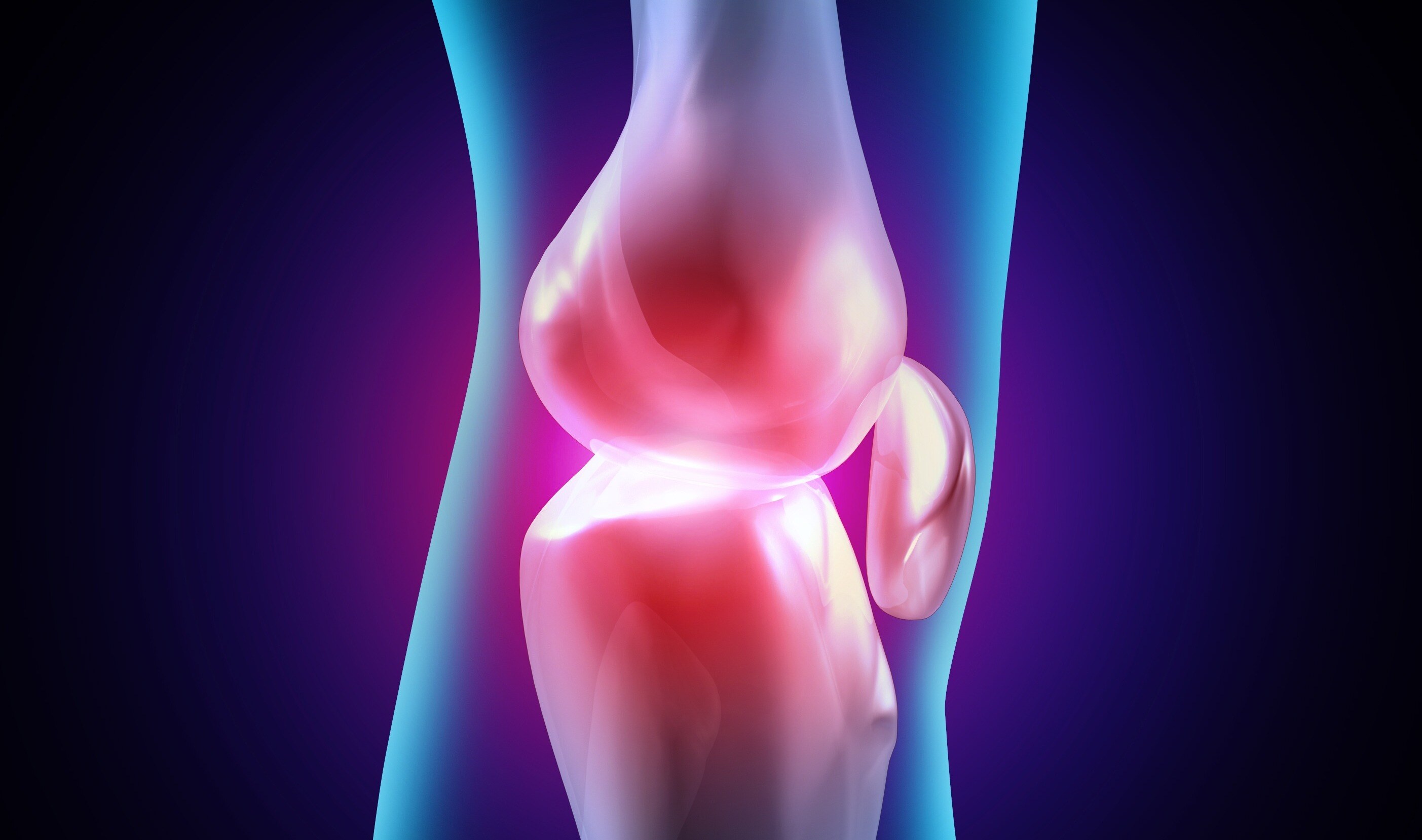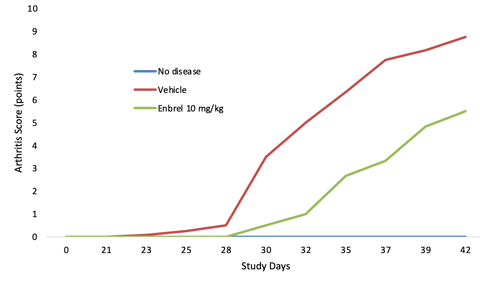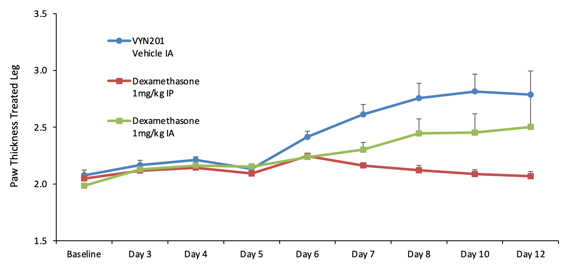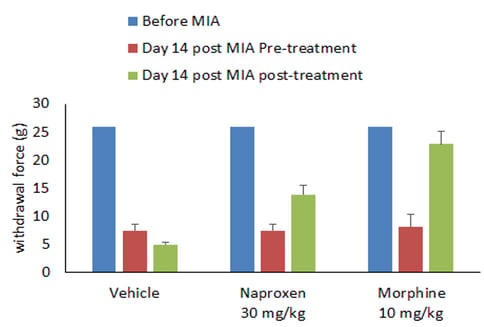3 min read

By: MD Biosciences on Sep 16, 2024 2:03:06 PM

Arthritic joint pain is a hallmark of inflammatory diseases such as rheumatoid arthritis (RA) and osteoarthritis (OA). Preclinical models are essential tools in investigating the mechanisms behind these conditions and in evaluating potential therapies. The Collagen-Induced Arthritis (CIA), Collagen Antibody-Induced Arthritis (CAIA), and Monosodium Iodoacetate (MIA)-induced osteoarthritis models each represent different aspects of joint inflammation and damage, offering insights into both acute and chronic inflammatory pain.
Collagen-Induced Arthritis (CIA)
The CIA model is initiated by immunizing animals with collagen, which triggers an autoimmune response. This leads to progressive joint inflammation, cartilage degradation, and bone erosion, mimicking the pathophysiology of rheumatoid arthritis. The CIA model is commonly used in rodents, and is ideal for studying chronic autoimmune arthritis and evaluating long-term therapeutic interventions.

Arthritis Score in CIA Mice. Mice treated with Enbrel had a lower arthritis score compared to the vehicle group, indicating a reduction in disease severity. Download datasheet here.
Collagen Antibody-Induced Arthritis (CAIA)
The CAIA model is induced by administering anti-collagen antibodies, resulting in a rapid and robust inflammatory response, directly targeting collagen in joint tissues. This model closely simulates the acute phase of rheumatoid arthritis, with joint swelling and cartilage damage occurring shortly after induction. The CAIA model is especially useful for studying the early stages of inflammation and testing fast-acting treatments due to its rapid disease onset.

Paw thickness in CAIA Mouse Model. An increase in paw thickness was observed in vehicle-treated animals. Following systemic treatment with dexamethasone, paw thickness was not changed. Intra-articular injection of dexamethasone was partially effective in reducing paw thickness. Download datasheet here.
Monosodium Iodoacetate (MIA)-Induced Osteoarthritis
MIA-induced osteoarthritis involves injecting monosodium iodoacetate into the knee joint, causing cartilage damage and degradation, leading to chronic neuronal damage. This model replicates the degenerative aspects of OA and is valuable for studying the progression of joint degeneration and chronic pain associated with OA. This model is offered in rodents and pigs.

Response to von Frey in MIA Rat Model. Positive controls have an increased withdrawal force14 days after treatment. Download datasheet here.
Choosing an Inflammatory Model
Choosing the appropriate model depends on the research focus. The CIA model is ideal for studying chronic autoimmune conditions such as rheumatoid arthritis (RA) and evaluating long-term therapeutic effects. For acute, early-phase RA studies, the CAIA model is better suited, allowing rapid screening of anti-inflammatory drugs. The MIA model is particularly useful for exploring the chronic pain and joint degeneration characteristic of osteoarthritis (OA) and can be applied in both rodents and pigs.
Learn more about these models by downloading the MIA datasheet and CIA/CAIA datasheet.